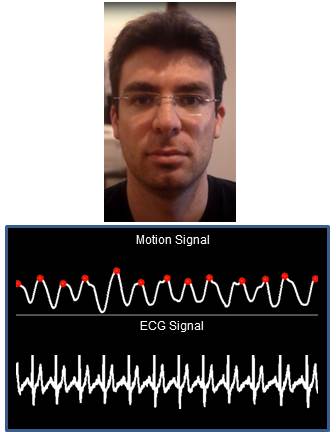Detecting Pulse from Head Motions in Video (CVPR 2013)
Guha Balakrishnan Frédo Durand John Guttag| (a). | (b). | (c). |
 |  |  |
| Examples of videos from which we were able to extract a pulse signal. (a) is a typical view of the face along with an example of our motion signal in comparison to an ECG device. (b) is a subject wearing a mask. (c). is a video of a subject with a significant amount of added white Gaussian noise. | ||
Abstract
We
extract heart rate and beat lengths from videos by measuring subtle
head motion caused by the Newtonian reaction to the influx of blood at
each beat. Our method tracks features on the head and performs
principal component analysis (PCA) to decompose their trajectories into
a set of component motions. It then chooses the component that best
corresponds to heartbeats based on its temporal frequency spectrum.
Finally, we analyze the motion projected to this component and identify
peaks of the trajectories, which correspond to heartbeats. When
evaluated on 18 subjects, our approach reported heart rates nearly
identical to an electrocardiogram device. Additionally we were able to
capture clinically relevant information about heart rate variability.
Download paper (pdf)
Download video
Download paper (pdf)
Download video